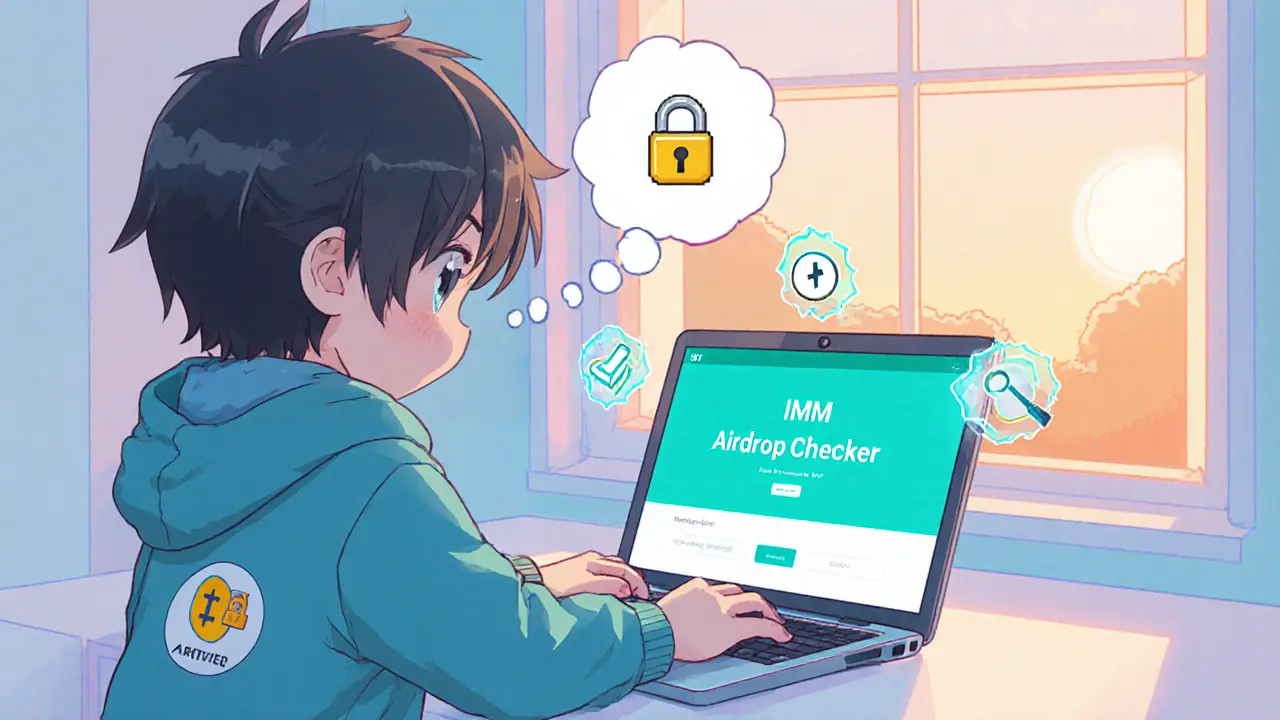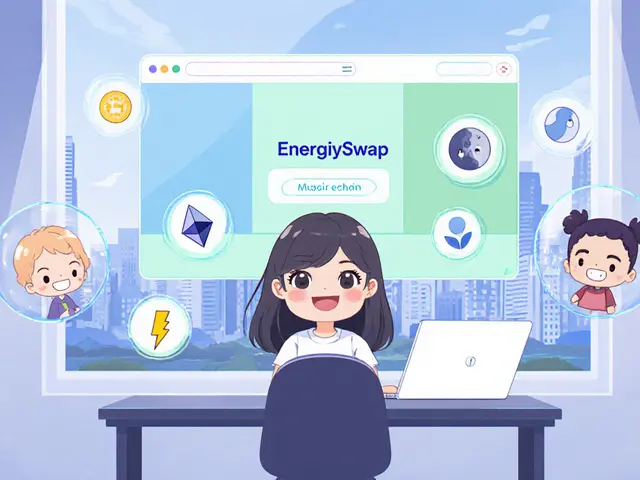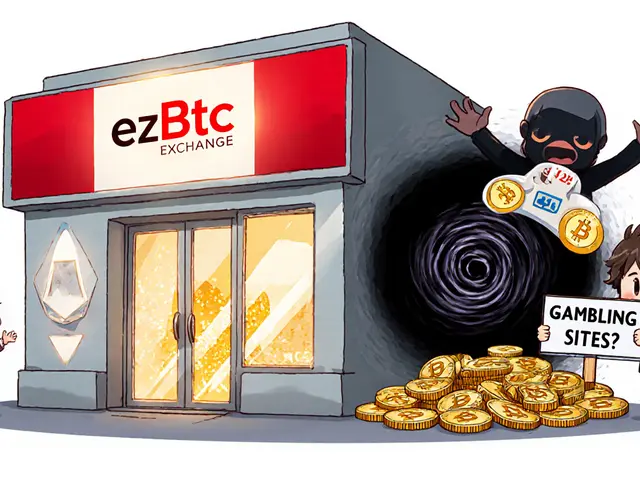IMM Airdrop Checker
Verification Result
Quick Takeaways
- There is no confirmed official IMM airdrop from the project as of October 2025.
- Always check the project’s official channels before committing any personal info.
- Use a dedicated wallet address for airdrop claims to protect your main holdings.
- Watch out for phishing links that mimic IMM’s branding.
- Follow the verification checklist below to avoid scams.
What Is IMM?
When you first see the name IMM is a blockchain‑based token that markets itself as a utility asset for decentralized finance (DeFi) applications. The project claims to enable fast, low‑cost transactions on a layer‑2 solution, but concrete details are scarce. According to the limited data available, IMM aims to launch its own ecosystem in Q42025, with a token supply of 1billion and a portion earmarked for community incentives.
Is There an Official IMM Airdrop?
At the time of writing, the only announcements that resemble an airdrop come from unofficial social‑media posts and community forums. No verified statement from the IMM team-whether on their website, verified Twitter, or Discord-mentions a token distribution program. In the crypto world, it’s common for rumors to spread before a formal launch, so the lack of an official source means you should treat any “IMM airdrop” claims as unverified until proven otherwise.
How to Verify an Airdrop’s Legitimacy
Because airdrop scams proliferate, follow a step‑by‑step verification process. Below is a practical checklist that works for IMM and any other token.
| Step | What to Look For | Why It Matters |
|---|---|---|
| 1 | Official announcement on the project’s website or verified social accounts. | Ensures the source is controlled by the real team. |
| 2 | Clear eligibility criteria (e.g., wallet activity, holding a certain token). | Legitimate airdrops usually require measurable engagement. |
| 3 | Smart‑contract address posted publicly. | Allows you to inspect the contract on a block explorer. |
| 4 | No request for private keys, passwords, or upfront fees. | Scammers often lure victims by asking for sensitive data. |
| 5 | Community feedback from reputable forums (Reddit, Bitcointalk). | Helps spot early warnings from experienced users. |

Typical Airdrop Process (If IMM Launches One)
Should IMM decide to run an airdrop, the workflow would likely follow the pattern many projects use in 2025. Here’s a plain‑English rundown:
- Announce the airdrop on official channels with a deadline.
- Publish the Smart Contract address that will handle distribution.
- Ask participants to connect a Wallet (e.g., MetaMask) and sign a harmless transaction to register.
- Verify eligibility based on Tokenomics criteria such as holding a minimum amount of the IMM token or completing a KYC process if required.
- Distribute the airdropped IMM Token automatically via the smart contract.
- Publish a transaction hash so participants can verify receipt on the blockchain explorer.
Red Flags Specific to IMM‑Related Scams
Even if the genuine project hasn’t spoken up yet, scammers often exploit the name to trick users. Keep an eye out for these warning signs:
- Domain names that look similar but have extra characters (e.g., imm-coin.com).
- Telegram groups that promise “instant” IMM tokens for a small fee.
- Posts asking you to “send a few ETH to this address to unlock your free IMM airdrop.”
- Links that redirect to a login page mimicking MetaMask’s UI.
- Absence of a publicly viewable smart‑contract address on Etherscan or the chain where IMM will launch.
How to Claim Safely (If the Airdrop Is Real)
Should you verify that an IMM airdrop is legitimate, follow these best‑practice steps to stay protected:
- Create a fresh Wallet address that you haven’t used for large holdings.
- Bookmark the official claim page and double‑check the URL before entering any data.
- Connect the wallet via the official site’s “Connect Wallet” button-never paste private keys.
- If KYC is required, submit documents through an encrypted portal and verify the SSL certificate.
- After claiming, copy the transaction hash and confirm the token balance on the block explorer.
Remember, the airdrop should be free. Anything asking for money is a red flag.
Frequently Asked Questions
Is there an official IMM airdrop right now?
As of October12025, no verified source from the IMM team has announced an airdrop. Keep an eye on the official website and verified social channels for any updates.
How can I tell if an IMM airdrop offer is a scam?
Check for an official announcement, a public smart‑contract address, no requests for private keys or fees, and community validation. Any deviation is likely a scam.
Do I need to complete KYC to receive an IMM airdrop?
It depends on the project’s compliance strategy. If KYC is required, the official claim page will clearly explain why and how your data will be handled.
Which wallet works best for claiming airdropped tokens?
Any non‑custodial wallet that supports the target chain (e.g., MetaMask for Ethereum‑compatible chains, Trust Wallet for Binance Smart Chain). Using a dedicated address for airdrops adds an extra layer of safety.
What should I do if I’ve already sent money to an “IMM airdrop” scam?
Unfortunately, crypto transactions are irreversible. Report the address to the platform you used, file a complaint with local authorities, and share the details on community forums to warn others.
Bottom Line
Until the IMM team releases a clear, verifiable announcement, treat any “IMM airdrop” claim with healthy skepticism. Use the verification checklist, keep your private keys safe, and rely only on official channels. By staying vigilant, you’ll protect yourself from scams and be ready to claim the real airdrop-if and when it arrives.







Stefano Benny
February 17, 2025 AT 01:42🚀 IMM airdrop hype? Sleep on it.
Bobby Ferew
February 19, 2025 AT 12:02The circulating narrative feels like a vaporwave of speculation, yet the tokenomics remain nebulous. Without an official whitepaper, any claim is just a buzz‑word carousel. The market’s sentiment index appears skewed by FOMO rather than fundamentals. Consequently, the risk‑adjusted return curve looks more like a cliff than a gradual incline.
celester Johnson
February 21, 2025 AT 22:22In the labyrinth of decentralized promises, IMM stands as a mirage that tempts the unwary with silhouettes of profit. One must interrogate the provenance of every announcement, for authenticity is the rarest commodity in the cryptosphere. The absence of a verifiable contract address is tantamount to a missing fingerprint on a suspect’s dossier. When a project touts “instant rewards” yet withholds its code, the logical deduction points to a classic rug pull. Moreover, the liquidity pool metrics, if any, are shrouded behind opaque dashboards that only the insiders can parse. The community’s pulse, as measured by sentiment analysis, shows a spike that correlates more with meme cycles than with genuine engagement. Ergo, the heuristic of “no fee, no key” becomes a non‑negotiable axiom for survival. The proliferation of look‑alike domains-imm‑token.io, immmairdrop.com-adds a layer of phishing risk that cannot be ignored. Phishing vectors exploit brand similarity, leading even seasoned traders into traps. The recommended praxis is to lock away all private keys, never share them, and restrict exposure to a cold wallet for any tentative claim. Automated bots lurking in Discord can siphon tokens the moment a claim button is pressed, reinforcing the need for manual verification on Etherscan. Remember, genuine airdrops rarely demand upfront capital; any demand for ETH or stablecoins is a red flag of the highest order. The psychological allure of free tokens can cloud judgment, but disciplined skepticism remains the best defense. If the project were truly committed, it would publish a comprehensive audit from a reputable firm, with the report accessible in a public repository. In the current vacuum, the only reliable signal is the silence of the official channels. Thus, the prudent investor should abstain, archive the rumors for future reference, and await an unmistakable, verifiable statement before committing any resources.
Prince Chaudhary
February 24, 2025 AT 08:42While the tone of the previous post leans heavily on caution, it’s also worth noting that community‑driven verification can be a powerful tool. Checking the official Twitter handle for the exact announcement timestamp can quickly confirm legitimacy, and the absence of such a post should raise immediate doubt.
Parker Dixon
February 26, 2025 AT 19:02Great points all around! 🎉 If you’re diving into any airdrop, start by bookmarking the official site and double‑checking the URL each time you log in. Use a brand‑new wallet address-never reuse an address that holds sizable assets. Verifying the smart contract on Etherscan gives you transparency; you can see the exact token distribution logic. Lastly, keep an eye on community forums like r/CryptoCurrency for real‑time alerts about scams. Stay safe and happy hunting! 🚀
Evie View
March 1, 2025 AT 05:22Seriously, the advice to use a fresh wallet is solid, but many newbies forget to disable auto‑fill in their browsers, which can inadvertently leak private keys. Also, never click “Connect” from a link sent via DM; always navigate manually. The devil is in the details, and those little oversights cost people dearly.
Sidharth Praveen
March 3, 2025 AT 15:42Thinking about an IMM airdrop? First, confirm the deadline on the official blog. Then, make sure your wallet has a small amount of ETH for gas-no project will ask you to send money to receive free tokens. Lastly, keep an eye on the transaction hash after claiming; it should appear on the explorer within minutes.
Sophie Sturdevant
March 6, 2025 AT 02:02Exactly, and if any site asks for a fee upfront, it’s a scam. That’s a classic red flag-don’t fall for it.
Nathan Blades
March 8, 2025 AT 12:22Let’s break down the typical airdrop workflow: announcement, contract deployment, eligibility verification, claim transaction, and finally distribution. Each of those steps can be weaponized by fraudsters, so scrutinize every link. The claim page should never request private keys; a simple wallet connect is all that’s needed.
Somesh Nikam
March 10, 2025 AT 22:42Agreeably, the claim page must be served over HTTPS, and the SSL certificate should be issued to the exact domain shown in the official announcement. Any mismatch in the URL or certificate is a tell‑tale sign of a phishing site.
Jan B.
March 13, 2025 AT 09:02Good summary. Verify source before clicking.
MARLIN RIVERA
March 15, 2025 AT 19:22That’s basic 101. If they can’t post a proper link they’re not legit.
Debby Haime
March 18, 2025 AT 05:42Solid advice! 👍 Always cross‑reference the claim URL with the official blog post. If it’s not an exact match, walk away. The community thrives when we all stay vigilant.
emmanuel omari
March 20, 2025 AT 16:02In my experience, the only trustworthy airdrops come from projects with audited contracts and transparent roadmaps. Anything else is just noise.
Andy Cox
March 23, 2025 AT 02:22Nice rundown. Just remember to keep your passwords safe.
Courtney Winq-Microblading
March 25, 2025 AT 12:42Indeed, safeguarding credentials is paramount; a compromised seed phrase can unravel years of diligent saving in a single breath. Moreover, the cultural zeitgeist around airdrops has shifted towards savvy self‑education rather than blind trust.
katie littlewood
March 27, 2025 AT 23:02When dissecting the intricacies of a potential IMM airdrop, one must first anchor their analysis in the fundamental principle of source authentication, which serves as the keystone of any credible claim. The official channels-namely the project’s website, verified Twitter, and Discord-should be examined for a congruent announcement timestamp, because any discrepancy often signals a fabricated narrative. Next, the smart‑contract address must be publicly disclosed; this address should be cross‑checked on Etherscan or the appropriate block explorer to verify that the bytecode aligns with the project’s published audit report. Absence of such transparency is a glaring red flag that cannot be ignored. Furthermore, eligibility criteria should be explicitly enumerated; vague requirements like “hold some token” without defined thresholds are typical bait used by malicious actors to create confusion and lure unwary participants.
In addition, the claim interface itself must be scrutinized for security best practices. A legitimate platform will employ HTTPS with a valid SSL certificate issued to the exact domain referenced in the official announcement; any mismatch or self‑signed certificate is an immediate cause for concern. The UI should request only a wallet connection via a reputable provider such as MetaMask, never the direct entry of private keys or seed phrases. Users must also be reminded that a genuine airdrop is fundamentally free-any demand for ETH, stablecoins, or other fees in exchange for tokens is unequivocally a scam.
Beyond the technical layers, community sentiment provides a valuable heuristic. Reputable subreddits, Bitcointalk threads, and other decentralized forums often surface early warnings when a fraudulent scheme surfaces, so a quick scan can save countless hours and potential losses. Critics who have previously fallen victim to similar scams often share transaction hashes and contract addresses, which can be cross‑referenced to ascertain whether the purported airdrop contract is actually distributing tokens or merely siphoning funds.
Lastly, prudent risk management dictates the use of a dedicated, low‑value wallet for any airdrop claim. This isolates your primary holdings from potential compromise, and any unexpected activity can be investigated without jeopardizing your core assets. In summary, the confluence of source verification, contract transparency, secure UI design, community due‑diligence, and strategic wallet segmentation creates a robust defense against the myriad tactics employed by scammers targeting the IMM airdrop hype.
Jenae Lawler
March 30, 2025 AT 09:22While the preceding exposition is thorough, it must be underscored that the gravitas of an official communiqué cannot be overstated; any deviation from the prescribed protocol is, in effect, an abdication of fiduciary responsibility. Hence, the onus remains squarely upon the discerning investor to demand proof in the form of audited contracts and verifiable signatures.
Chad Fraser
April 1, 2025 AT 19:42Bottom line: stay safe and keep an eye on official updates.